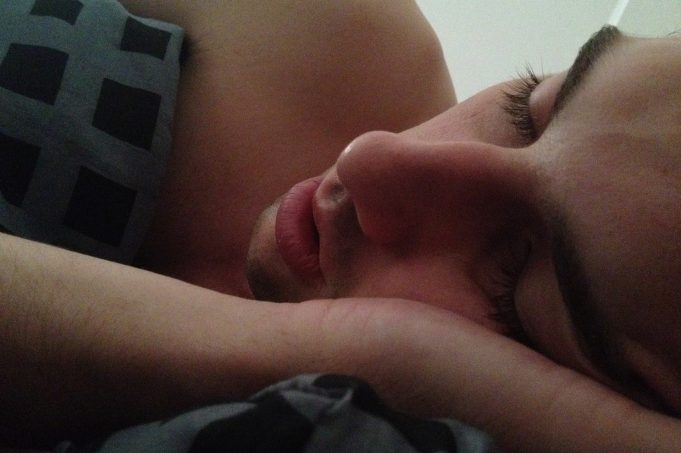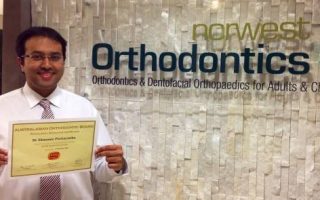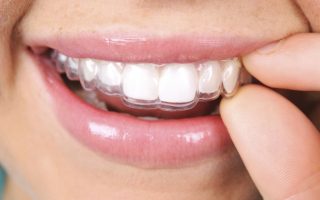To function at your prime, the average adult requires 7-8 hours sleep each night. But if you feel tired, listless or unrefreshed even after clocking up a full night’s sleep then chances are you may have undiagnosed Obstructive Sleep Apnoea.
Sleep apnoea is estimated to affect more than a quarter of middle-aged males and around 10 per cent of females, but in welcome news, orthodontic intervention is emerging as one of the more successful and less invasive treatment options.
Here’s an insight into Obstructive Sleep Apnoea, and how an orthodontic appliance might be just the simple treatment option you need.
What is Obstructive Sleep Apneoa
Affecting more than a quarter of Australian middle-aged males and around 10 per cent of females in the same age bracket, Obstructive Sleep Apnoea occurs when the muscles in the tongue and throat relax during sleep and partially or completely block the airway.
It not only reduces the ability to gain sufficient rest but can lead to serious and long-term health conditions such as cardiovascular disease, diabetes and increased risk of stroke.
The first sign you may have Obstructive Sleep Apnoea is snoring, with between 60 and 70 per cent of people who snore suffering some degree of the condition.
As we sleep the muscles of the body completely relax. In Obstructive Sleep Apnoea the soft tissues and tongue collapse and are sucked against the back of the throat restricting or blocking air flow. These apnoeas, or periods without breath, can last from 10 seconds to a minute or longer.
When this lack of air causes the sleeper’s blood oxygen level to drop low enough, the brain sends a wake-up signal. The sleeper partially awakens with a gasp or snort and the throat obstruction clears. The sufferer resumes sleep but the cycle starts again, with severe cases causing individuals to awaken more than 30 times an hour.
While Obstructive Sleep Apnoea can occur at any age, it is most common in men aged 40 to 65. Contributing factors include obesity, smoking, alcohol consumption, caffeine, allergies, a family history and facial structure.
It not only affects quality of life, leaving the sufferer feeling unrefreshed, but can result in increased risk of motor vehicle and workplace accidents due to fatigue, decreased libido, diabetes, heart failure, elevated blood pressure, stroke, depression, and mood swings.
The good news is, once diagnosed, Obstructive Sleep Apnoea is treatable.
Do you have OSA?
One of the leading symptoms of Obstructive Sleep Apnoea is snoring, with 60 to 70 per cent of people who snore suffering the condition. Ironically, those who snore may not even be aware they do it unless some else lets them know.
The snoring usually commences shortly after the individual goes to sleep and continues at a regular pace for a period of time, gradually getting louder.
In Obstructive Sleep Apnoea this is followed by a brief period of silence where there is little or no breathing and then a loud snort or gasp as the sleeper partially awakens to clear their airway. The snoring then resumes and the cycle continues.
While the snoring and awakening cycle is the primary symptom of Obstructive Sleep Apnoea, there are other signs.
The top symptoms you may have Obstructive Sleep Apnoea include:
- Snoring
- Loud gasping during sleep
- Daytime fatigue
- General sleepiness
- Unintentionally falling asleep during the day
- Insomnia
- Regularly awakening to go to the bathroom
Diagnosis of OSA
If you believe you may be suffering Obstructive Sleep Apnoea, a general practitioner is the first port of call.
They will refer you have a sleep study undertaken. This involves an overnight analysis of your sleep patterns to determine whether you have Obstructive Sleep Apnoea and the severity of your condition. This will also determine which treatments will best suit.
The sooner the condition is diagnosed the sooner treatment can commence, and the fewer ongoing health complications that will arise.
What are the risks if OSA if untreated?
If left untreated, Obstructive Sleep Apnoea not only affects an individual’s quality of life, but may also have serious consequences for their long-term health.
Most complications can be attributed to the oxygen deprivation incurred during apnoea, but the repeated awakenings also stop sufferers from attaining a deep, restful sleep which is imperative for the body to repair itself and maintain the immune system. The wake-up signal the brain sends to the sleeper also causes a spike in adrenaline.
Serious health implications include:
- Cardiovascular disease
- High blood pressure
- Heart failure
- Stroke
- Obesity
- Diabetes
- Disturbed heart rhythms
- Depression
The lack of sleep can also result in:
- Moodiness
- Fatigue
- Decreased libido
- Lack of concentration
- Less ability to problem solve
- Increased risk of motor vehicle and workplace accidents
- Headaches
- Memory loss
Treatment Options for OSA
There is no permanent cure for Obstructive Sleep Apnoea but a number of successful treatment options are available including ventilators, orthodontic appliances and surgery, depending on the cause and severity of the apnoea.
Oral appliances
One of the most convenient options available, oral appliances like SomnoDent are custom-made by an orthodontist and worn during the night. Technically called a Mandibular Advancement Splint, it works by shifting the jaw slightly forward to keep the airway open.
Painless, non-invasive and adjustable, it resembles a clear mouth guard and is as simple to use as a retainer, providing a discrete, comfortable treatment option that can be travelled with easily. Once fitted, your orthodontist works with your medical practitioner to assess and evaluate effectiveness and provide adjustments as required.
Mandibular Advancement Splints are viewed as one of the most effective alternative treatments for individuals with Obstructive Sleep Apnoea, based on 40 years of scientific studies. They are now designated by the Australian Sleep Association and American Academy of Sleep Medicine as a key treatment for snoring and sleep apnoea.
Making the orthodontic choice
If you have been diagnosed with Obstructive Sleep Apnoea, then Norwest Orthodontics can assist.
Orthodontic appliances are emerging as one of the most effective treatments for sleep apnoea. They not only treat the condition by opening the airways but do so in a manner that is discrete, comfortable, portable and as simple as inserting a mouth guard overnight.
About Norwest Orthodontics
Norwest Orthodontics specialises in helping patients achieve a great smile, no matter their age. We feature a range of orthodontic treatments that span from early intervention right through to remedial adult work.
You can learn more about our services, or contact us to make an appointment.




